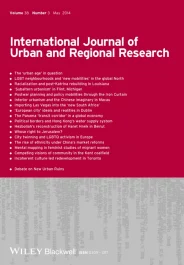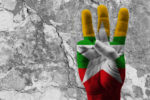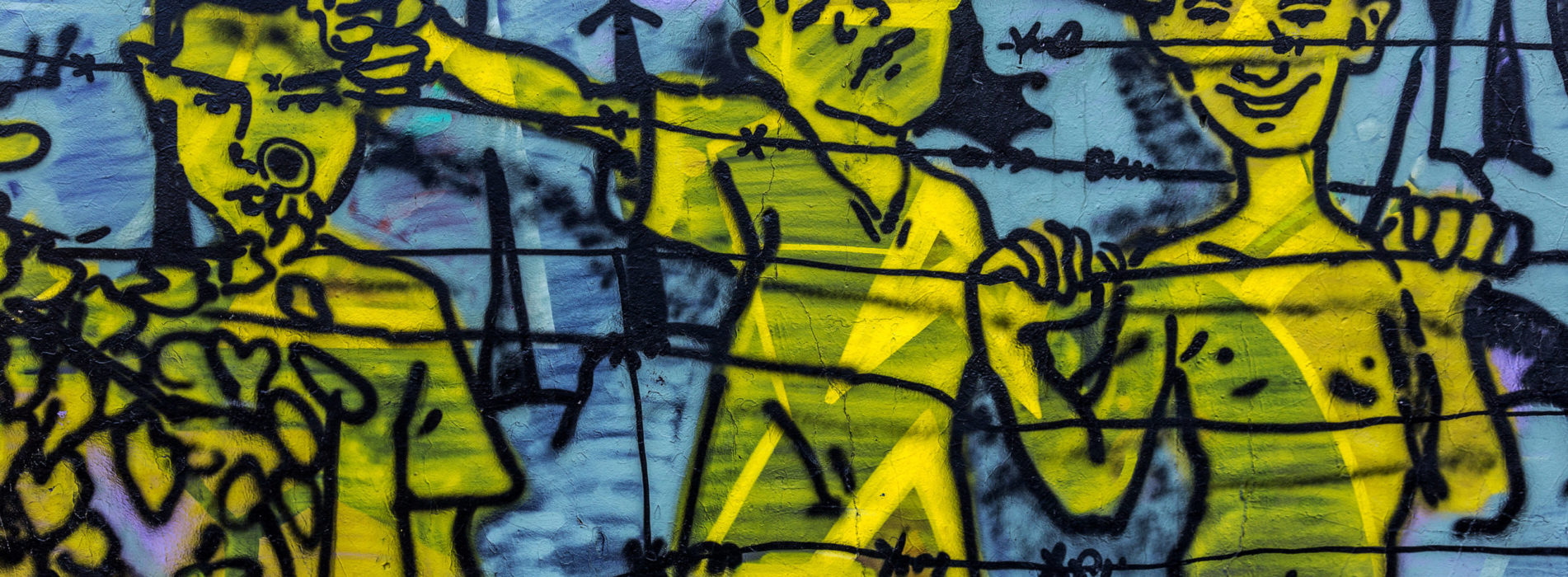Centring the Urban in Our Understanding of Violence
A growing consensus suggests that violence is increasingly concentrated in urban areas (see Sundberg & Melander 2013; Höglund et al. 2016; Brathwaite & Konaev 2022). Yet evidence that armed inter- and intra-state conflicts have taken a decisive ‘urban turn’ is mixed at best (see Urdal 2005; Buhaug & Urdal 2013; Elfversson & Höglund 2021). To a large extent, the ambiguity may be attributed to mainstream ways of coding conflict. For one, demarcating conflict as a contested incompatibility—a disagreement that concerns control over government and/or territory—or between clearly identifiable and organised groups tends to obscure local variation. Cities that experience high rates of homicide relative to even the most brutal civil wars are, as a result, not classified as ‘conflict-cases’ absent these criteria. In a related vein, ‘post-conflict’ cities that continue to experience violence in other forms—driven by a re-configuration and re-labelling of actors, shifting incentives, allegiances, and modes of control—also elude classification. “Mean-spirited” analyses, invalid national to local mappings, and the use of geospatial gridded-data that only loosely correspond to cities consequently underscore the need to more effectively centre the urban in our understanding of violence (Snyder 2001, p. 98; Elfversson & Höglund 2021).THE RE-CONFIGURATION OF THE URBAN PARADIGM, WOULD HAVE US QUESTION THE VERY NOTION OF THE CITY AS A UNIT OF ANALYSIS, EXTENDING OUR VIEW BEYOND ITS MORE BOUNDED AND STATIC TERRITORIAL CONFINES
The very notion of the ‘urban’ can be further problematised. Cities are by no means homogenous sites—“urban peripheries” reinforce relations of mutual dependence (Caldeira & Holston 2008), displacing rural for increasingly urban forms of subjugation and socio-spatial seclusion (Wacquant 2009). Identities in urban settings are purposed and re-purposed in response to new spatial orders or disorders—Nigeria’s top-down ‘political economy of predation’ has, for instance, generated variegated, violent forms of urban resistance from the bottom-up, ranging from youth associations to ‘area boys’, vigilantes and student-led cults that draw on existing cultural repertoires (Gore & Pratten 2003). And geographies of urban territorial control—from streets to neighbourhoods and municipalities—differ appreciably. In a similar vein, violence need not be distributed evenly across urban areas, taking distinct forms that vary over space and time.

Drawing on Lefebvre (2003), a growing body of work further problematises the very distinction between ‘urban’ and ‘non-urban’ regions, challenging the notion of the urban as a static, spatially demarcated unit of analysis. Adopting a lens that acknowledges the unprecedented scale of metropolitan areas, scholars point to the growing relocation of key urban functions to suburbs, the repurposing of corridors linking urban to non-urban spaces, and the degradation of the wilderness—calling for a “new conceptualisation of urbanisation processes both within and beyond those settlement spaces that are demarcated as ‘cities’ ” (Brenner & Schmid 2014, p. 749). “Planetary urbanisation”, the label that Brenner and Schmid give to the reconceptualisation or re-configuration of the urban paradigm, would have us question the very notion of the city as a unit of analysis (ibid).
The essays in this volume, the product of a new “research practicum” course in the political science/international relations department, draw on these debates to reflect on the associations between cities—their political orders and disorders—and outcomes that range from occupation and resistance to marginalisation and containment. Employing an eclectic set of theoretical perspectives, the essays highlight how spatial settlements patterns and spatio-temporal borders shape the lived experiences of refugees and asylum seekers from conflicted-affected locales in urban areas. Others question the very characterisation of militant movements as distinctly urban or rural, and political orders as distinctly state- or non-state based. Still others examine how urban design—from the planning of state capitals to urban peripheries—shapes protest, crime and inequality. The cases range from Beirut, Gaza, Idlib and Jerusalem in the Middle East, Myanmar in South East Asia, to Milan and Paris in Europe. Together, the essays prefigure the potential of centring—and challenging—the urban in our understanding of contemporary conflict, violence, and peace. They constitute a first step towards a more textured understanding that mobilises spatial, temporal, and visual modes of analysis. The promise lies in making visible the varied roles that urban morphologies play, adding to the debate on cities in and as sites of conflict.
As spatial, architectural, material, and social spaces, urban morphologies are central in channelling, or deterring, flows of violence. Through critical engagement with questions on violence in the city, the essays in this special issue explore the role of the urban in reproducing inequalities, enabling or hindering riots and protests, engendering armed conflict, and fostering peace.
-
1
 Italian Hospitality
Italian HospitalityThis essay by Chiara Valenti examines how Italy’s reception system for housing refugees and asylum seekers interacts with Milan’s urban morphology to create implicit spatiotemporal borders, defined as the product of urban apportionment—the discriminatory processes by which space and time are delineated and diminished when seeking urban asylum. These borders are consequential and contribute to the marginalisation and oppression of transient subjects in cities like Milan.
-
2
 Hybrid Political Orders in Urban Settings
Hybrid Political Orders in Urban SettingsWhile hybrid actors attempt to harness the power and resources of the state, they do not share a uniform desire to replace the state. On the contrary, Hezbollah’s hybrid status serves to strengthen the local appeal of Hezbollah-linked service organisations as an alternative to unreliable state social services while demonstrating the organisational potential of Hezbollah’s notion of resistance. According to Zachary Fesen, it is precisely the organisation’s hybrid status that has allowed Hezbollah to turn Beirut’s al-Dahiyeh into an area of strong political support for the organisation.
-
3
 Aerial Occupation and Aerial Forensics in Gaza
Aerial Occupation and Aerial Forensics in GazaAs conflicts increasingly target urban areas, cities in Gaza are no exception to this trend—all the more so as the distinction between the urban and rural is effectively eroded, given the Strip’s high population density and equally high proportion of built-up area. Here Joshua Hellinger and Ravi Bhavnani explore how both the occupation of Gaza and its investigation are effectively being conducted from above.
-
4
 Naypyidaw, Myanmar: A Capital Devoid of Protests
Naypyidaw, Myanmar: A Capital Devoid of ProtestsMyanmar’s modern history is characterised by multiple instances of widespread popular protests, both rural and urban. However, in a world where protests are becoming increasingly urban, Myanmar’s capital city, Naypyidaw, has seen relatively few of them. Christian Jiang argue the reasons why Naypyidaw is so “special” can be found in its urban layout, designed precisely to counter potential forms of popular dissent.
-
5
 Planetary Conflict: Exploring the Urban Geography of Boko Haram
Planetary Conflict: Exploring the Urban Geography of Boko HaramThe “urban” has never been more central to civil war and armed conflict. Yet, narrow conceptualisations of the urban make it difficult to discern its role in ostensibly rural insurgencies. Using Boko Haram as a case in point, this essay by Adam Talsma explores how the concept of ‘planetary urbanisation’ sheds new light on armed conflicts—urban and non-urban alike.
-
6
 Making Peace with Urban Political Settlements
Making Peace with Urban Political SettlementsToday’s conflicts are complex, they take place simultaneously at multiple levels, among different actors, and require innovative solutions for peace. In an effort to face these challenges, urban political settlements (UPS) can effectively re-establish political order and provide an alternative to comprehensive, state-wide peace agreements (CPA). Emilian Berutti argues that urban political settlements are better situated to respond to the challenges of contemporary conflicts relative to top-down, state-centric peace-making initiatives.
-
7
 Informality as a Right to Necessity?
Informality as a Right to Necessity?Since 1967, the Israeli authorities have sought to change the demographic structure and morphology of the city of Jerusalem to establish a Jewish hegemony. Israel’s urban policy has led to the gradual expropriation of Palestinian land and the revocation of the Palestinian rights to the city, resulting in two planning models that serve two different people. Yet, while urban planning allows for control over the city and the fulfilment of ideological and political objectives, it can also be challenged and circumvented. In the face of Israel’s discriminatory policies depriving Palestinian people of their rights to regulate land use and manage their own resources, Emna Fayala shows that an alternative form of informal urban planning is effectively being mobilised.
-
8
 Stagnation in the French Banlieues
Stagnation in the French BanlieuesOver the years, a series of urban renewal policies implemented by different French governments has attempted but failed to address the social and economic situation of the banlieues. Successive policies were closely tied to practices relying on superficial and easy fixes that fell short of addressing the more structural and deep-rooted problems in the banlieues. In the absence of more substantial reforms, according to Paul Harding, the deterioration of social conditions in the banlieues seems likely to continue.
The editors of this issue are grateful to Gopalan Balachandran, Christiana Parreira, Michelle Weitzel, and the editorial team at IHEID for comments on the essays.

